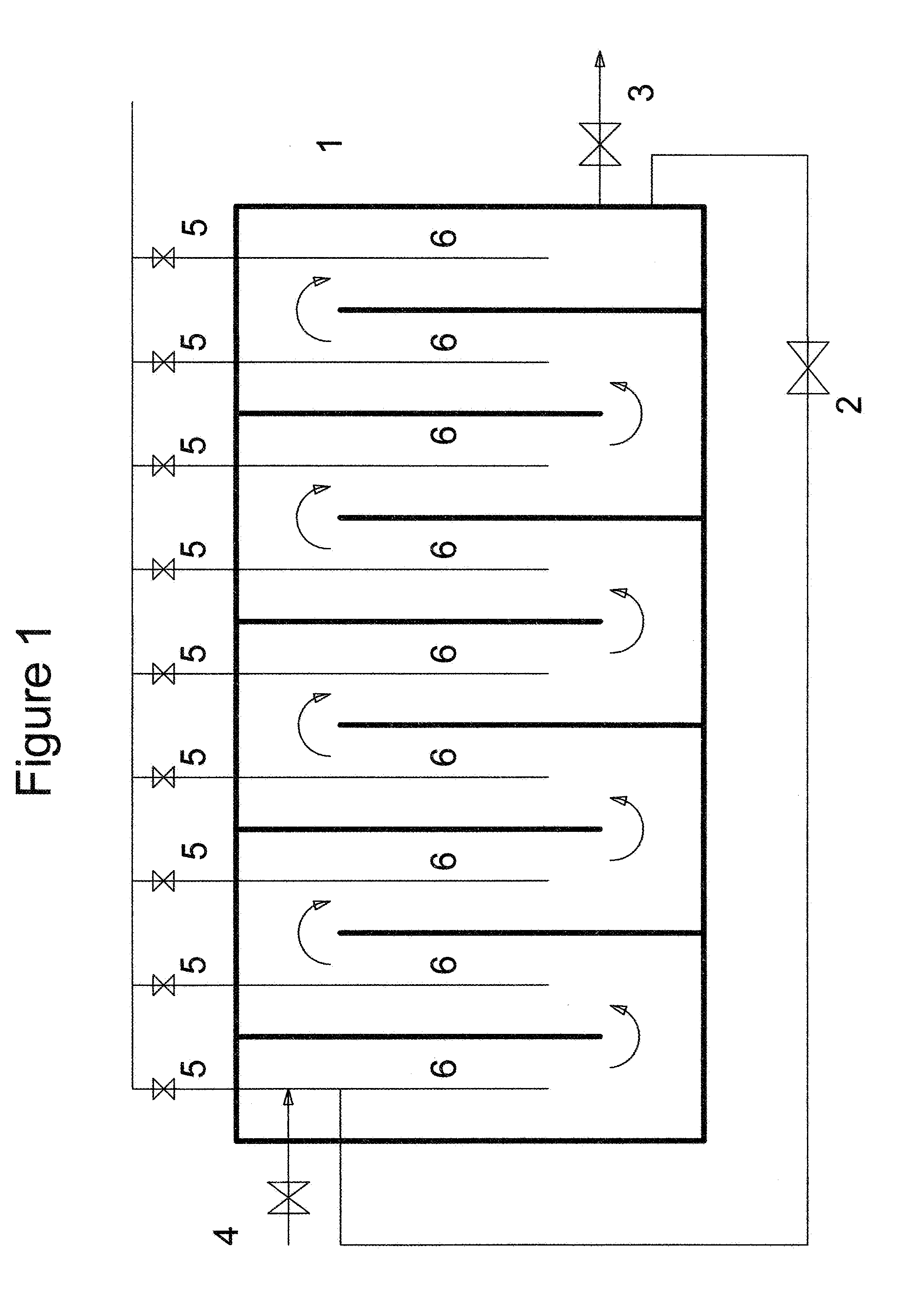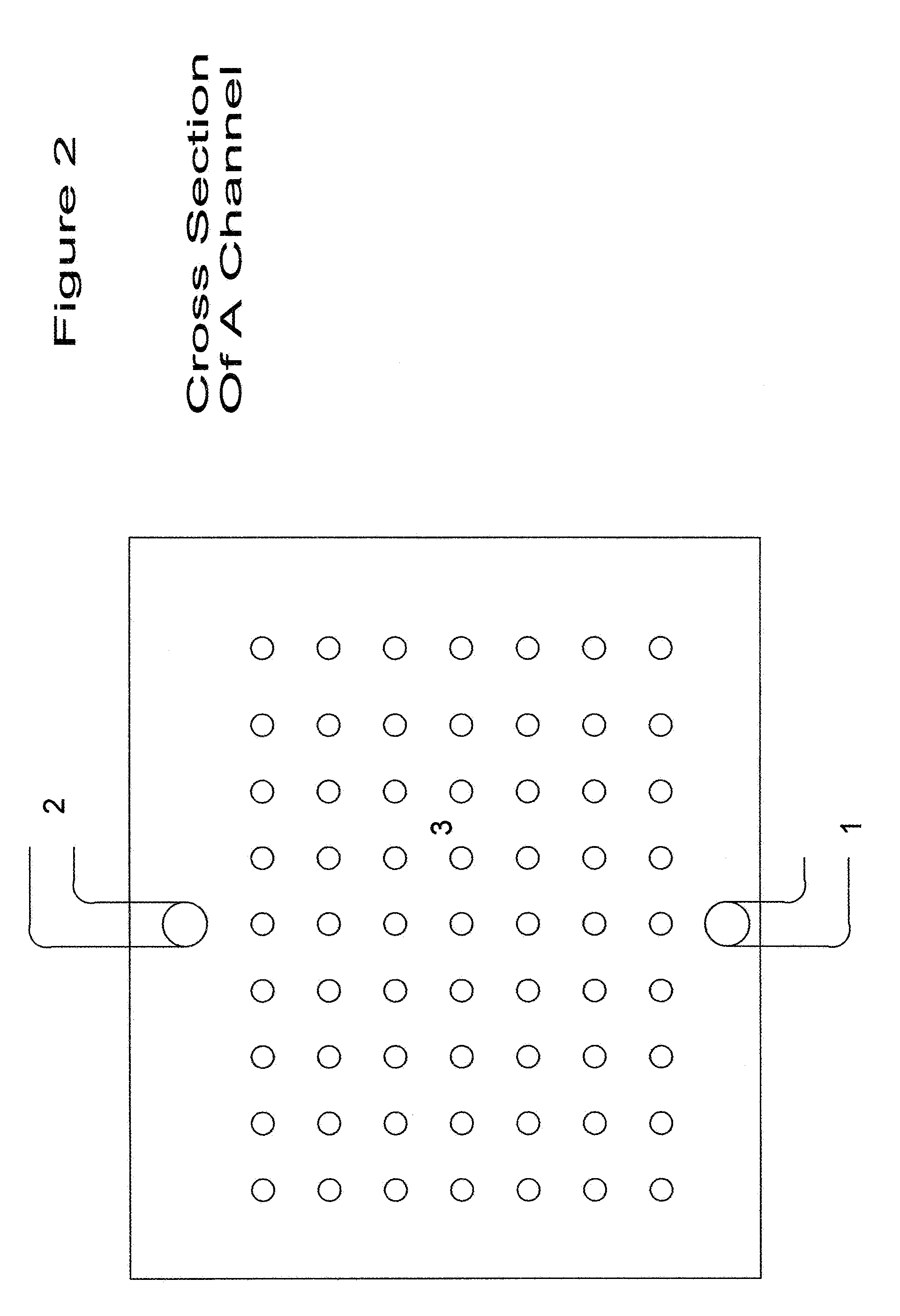High Efficiency Continuous Micro Algae Bioreactor
a bioreactor and micro algae technology, applied in bioreactors/fermenters, biomass after-treatment, special use, etc., can solve the problems of high cost of methods, large land area, and inability to meet the needs of microorganisms, so as to increase the flow of flue gas and micronutrients, and reduce the spacing
- Summary
- Abstract
- Description
- Claims
- Application Information
AI Technical Summary
Benefits of technology
Problems solved by technology
Method used
Image
Examples
Embodiment Construction
[0010]The bioreactor shall be a concrete pond the exact dimensions of which are dependent on the amount of flue gas available. The depth of the pond must be a minimum distance of 5 feet to provide for sufficient time to absorb the CO2 and other flue gases into the water. To conserve space a depth of at least 10 feet is most practical. The main factors determining the length and width of the bioreactor are the amount of flue gas to be consumed and the algal species chosen. Many algal species have shown the ability to more than double their mass in a 24 hour period. A 500 Mega Watt electrical generating facility would require a bioreactor as small as a square 400 feet on each side.
[0011]As shown on FIG. 1, water and algae are recirculated to the bioreactor via line (2). Nine channels are shown in FIG. 1, but the exact number would be determined by the magnitude of the source of carbon dioxide. A reactor 400 feet long would have as many as 40 channels. Nutrients are added at (5) along ...
PUM
| Property | Measurement | Unit |
|---|---|---|
| temperatures | aaaaa | aaaaa |
| distance | aaaaa | aaaaa |
| depth | aaaaa | aaaaa |
Abstract
Description
Claims
Application Information
 Login to View More
Login to View More - R&D
- Intellectual Property
- Life Sciences
- Materials
- Tech Scout
- Unparalleled Data Quality
- Higher Quality Content
- 60% Fewer Hallucinations
Browse by: Latest US Patents, China's latest patents, Technical Efficacy Thesaurus, Application Domain, Technology Topic, Popular Technical Reports.
© 2025 PatSnap. All rights reserved.Legal|Privacy policy|Modern Slavery Act Transparency Statement|Sitemap|About US| Contact US: help@patsnap.com


